|
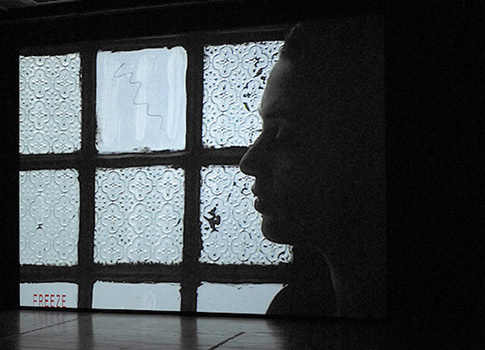
Double Bubble, 2001
Double Bubble, a video work created in 2001 by Bosnian artist Maja Bajevic, addresses the duality of religious morals and ethics: increasingly, political attributes are linked to particular religious confessions, while religion plays an ever more important role in the male- dominated hierarchy of the world powers. This is the backdrop against which Maja Bajevic as a female performer utters contradictory statements such as "I have shot 55 people during prayer in the name of God" or "I free people from sins. They give me money." Double Bubble becomes a mirror for the misuse of power and religion.
Maja Bajevic, * 1967 in Sarajevo (SCG, ehem., former JUG), lives and works in Paris (F) and Sarajevo (SCG)
 Maja Bajevic, Double Bubble, 2001 Maja Bajevic, Double Bubble, 2001
video (colour, sound)
3:36 min., loop
courtesy Galerie Peter Kilchmann, Zürich,
Galerie Michel Rein, Paris
|
|
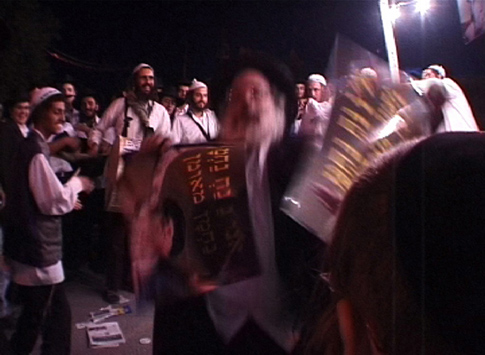
Dancing with Men, 2003
By devising Marcus Fisher as her male alter ego, the London-based artist Oreet Ashery sets off a visual and performative examination of cultural, religious and sexual identity. In her interventions as an orthodox Jew in picture-perfect attire, she confronts her secular environment with the explicitly "other", thereby probing the limits of multicultural and multi-religious societies. By confronting orthodox Jewish tradition with its own taboos, such as homosexuality, transvestism and sexuality, Ashery simultaneously describes her own "queer" return to this very tradition (in Hebrew "Mar-Cus" means "Mr. Cunt"). Accordingly, the artist describes the overwhelming feeling of belonging, history and home she experienced when dancing together with hundreds of orthodox Jewish men at the religious celebrations of "Lag Baomer".
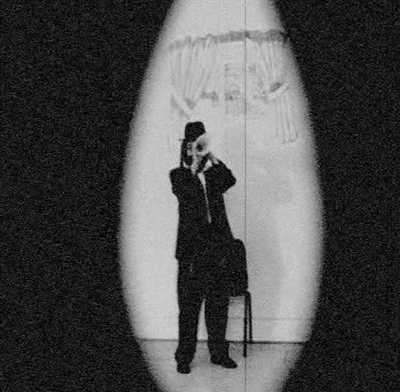
Oh Jerusalem, 2005
In her performances, interventions and photographs as well as in her video and textual works, Oreet Ashery examines questions of cultural, political, religious, and sexual identity. The video Oh Jerusalem shows the artist alternating between the stereotypical dress of an Arab male and an orthodox Jew. In slapstick fashion, both appear to be trapped in a loop. They sit down on a chair, spy through a large paper tube and finally, in an excessive display of joy, they discover Jerusalem. Through a constant acceleration of the repeated actions directed towards the shared site of their longing, both figures finally merge into one. Making reference to classic silent movies, Oreet Ashery here paints a tragicomical picture of the continuing conflict between Israel and the Palestinians.
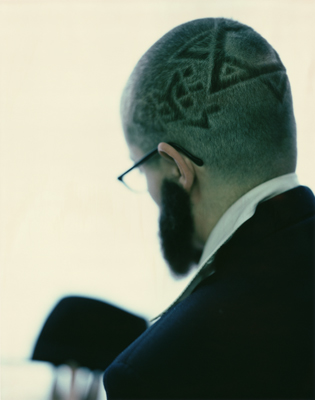
Self Portrait as Marcus Fisher 1–5 , 2000
By devising Marcus Fisher as her male alter ego, the London-based artist Oreet Ashery sets off a visual and performative examination of cultural, religious and sexual identity. In her interventions as an orthodox Jew in picture-perfect attire in London, Berlin and Tel Aviv, she confronts her secular environment with the explicitly "other", thereby probing the limits of multicultural and multi-religious societies. By confronting orthodox Jewish tradition with its own taboos, such as homosexuality, transvestism and sexuality, Ashery simultaneously describes her own "queer" return to this very tradition. In Hebrew "Mar-Cus" means "Mr. Cunt".
Oreet Ashery, * 1966 in Jerusalem (IL), lives and works in London (GB)
 Oreet Ashery, Dancing with Men, 2003 Oreet Ashery, Dancing with Men, 2003
video (colour, sound)
3 min., loop
courtesy Oreet Ashery
Oreet Ashery, Oh Jerusalem, 2005
video (b/w, no sound)
4 min., loop
courtesy Oreet Ashery
Oreet Ashery, Self Portrait as Marcus Fisher 1–5, 2000
5 photographs (inkjet print, original: polaroid)
each 101,5 x 80 cm
photo: Manuel Vason
courtesy Oreet Ashery
|
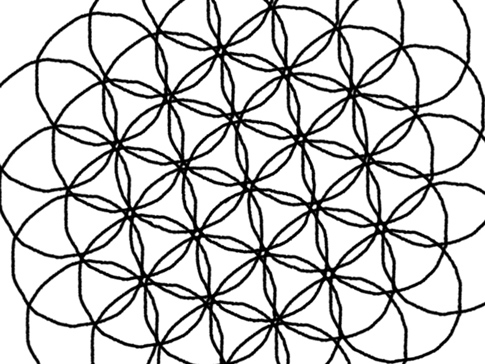
God is Design, 2005
The video work God is Design by the Algeria-born video and installation artist Adel Abdessemed arose a reaction to the xenophobic climate noticeable in New York after the attacks of September 11th 2001. Abdessemed fashioned the video from more than 3000 individual drawings of ornamental motifs taking up symbolism from the most varied of visual sources: the formal canons of Islam, Judaism and Christianity are as recognizable here as the formal language of geometric painting, of North African abstract patterns or of human cell structures. Abdessemed combines all this in a kind of universal language of form, a "visual Esperanto" negating the supremacy or dictatorship of a single formal canon.
Adel Abdessemed, * 1971 in Constantine (DZ), lives and works in Paris (F), Berlin (D), and USA
 Adel Abdessemed, God is Design, 2005 Adel Abdessemed, God is Design, 2005
Video animation made from 3050 drawings (b/w, sound)
4:44 Min., Loop
Courtesy the artist and David Zwirner, New York;
Christine König Galerie, Wien/Vienna
|
|
|
|
<< Start < Prev 1 2 3 4 5 6 7 8 Next > End >>
|
|
Page 8 of 8 |



